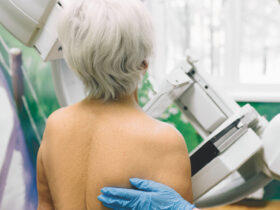Michael J. Petrocelli, D.P.M., F.A.C.F.A.S., C.W.S.P.
Board Certified Ankle and Foot Surgeon and Board Certified Wound Care Specialist
 Bunions are a common and painful foot condition that affects millions of people regardless of gender. These bony protrusions at the base of the big toe not only cause discomfort but can significantly impact quality of life when left untreated. For those suffering from bunions, understanding this condition is the first step toward finding relief.
Bunions are a common and painful foot condition that affects millions of people regardless of gender. These bony protrusions at the base of the big toe not only cause discomfort but can significantly impact quality of life when left untreated. For those suffering from bunions, understanding this condition is the first step toward finding relief.
What Are Bunions?
A bunion (hallux valgus) is a progressive deformity that occurs when the big toe begins to angle toward the other toes, causing the joint at its base to protrude outward. This creates the characteristic bump on the side of the foot that often becomes inflamed and painful, especially when wearing shoes.
Many people notice bunion development after age 40, when the joint begins to hurt and, in moderate to severe cases, visibly protrudes. Once this happens, painful sores can form where shoes rub against the bunion, and the joint may begin to swell, causing increasing discomfort.
Causes: Not Just a Fashion Problem
While tight, narrow shoes can certainly exacerbate bunion pain, the misconception that bunions are solely caused by footwear choices is incomplete. Heredity plays a significant role in bunion development. Many patients report family members—mothers, fathers, siblings, or aunts—who also suffered from bunions, indicating a genetic component to this condition.
Bunions represent one of several inflammatory arthritic conditions that can affect the feet, and they are equally problematic for both men and women, though women may experience symptoms more frequently due to certain footwear choices.
Conservative Treatment Options
When bunions begin causing discomfort, several non-surgical approaches may provide temporary relief:
. Wearing more accommodating, comfortable shoes with adequate toe space
. Using gel toe spacers or bunion pads to maintain proper toe alignment
. Applying ice to reduce inflammation
. Taking non-steroidal anti-inflammatory drugs (NSAIDs) like ibuprofen to manage pain
However, it’s crucial to understand that bunions NEVER heal on their own. These conservative measures can help manage symptoms, but they cannot reverse the progressive nature of the condition.
When Surgery Becomes Necessary
As bunions progress, conservative treatments often become less effective at controlling pain and maintaining mobility. At this point, surgery becomes the definitive solution.
Modern bunion surgeries are tailored to each patient’s specific condition. The procedures vary in complexity depending on the severity of the deformity:
. For mild to moderate bunions, the surgeon may simply cut the bone and use a small screw for stabilization
. More severe cases, particularly where the joint has become arthritic, might require plates and screws for proper correction
At Collier Podiatry, Dr. Petrocelli uses advanced surgical techniques that include numbing behind the knee (providing 24 hours of pain relief) combined with anesthesia for maximum comfort during the procedure.
Recovery and Rehabilitation
Recovery from bunion surgery typically spans several months, with the initial two to four weeks requiring protection via a special boot or cast. During this time, patients can remain mobile but must take precautions to protect the surgical site and allow proper healing.
Following the initial recovery period, a gradual return to normal activities is possible as the foot continues to strengthen and adapt to its corrected alignment.
Expert Care Makes the Difference
With over 33 years of podiatric practice, Dr. Michael Petrocelli at Collier Podiatry brings extensive experience to bunion treatment. His approach begins with a comprehensive evaluation of each patient’s symptoms and pain levels, from which he creates individualized treatment plans.
Dr. Petrocelli emphasizes the importance of addressing bunions proactively, before they progress to advanced stages that cause severe pain and limitation. Early intervention often means simpler surgical procedures and faster recovery times.
Taking the First Step Toward Relief
If you’re experiencing bunion pain, don’t wait for the condition to worsen. Unlike many foot problems that may resolve with time and conservative care, bunions are progressive and require proper medical attention.
The team at Collier Podiatry is ready to answer your questions and help you find the relief you deserve. Their kind and well-trained staff understand the impact foot pain can have on your daily life and are dedicated to helping you get back on your feet. Contact Collier Podiatry today to schedule your evaluation with Dr. Petrocelli.
Visit www.collierpodiatry.com or call (239) 775-0019 to take the first step toward living free from bunion pain.
Collier Podiatry P.A.
Michael J. Petrocelli
NCH Countryside Commons
1715 Heritage Trail, Suite 204
Naples, FL 34112
Phone: (239) 775-0019
Fax: (239) 775-0219








